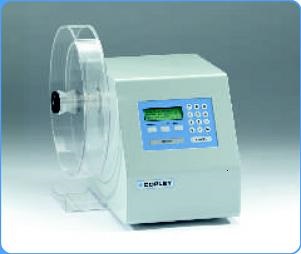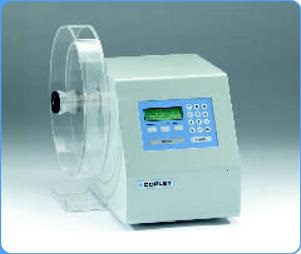PCATALOG
Friability Tester
Introduction to Friability Testing 
Friability is the tendency for a tablet to chip, crumble or break following compression. This tendency is normally confined to uncoated tablets and surfaces during handling or subsequent storage.
It can be caused by a number of factors including poor tablet design (too sharp edges), low moisture content, insufficient binder, etc.
For obvious reasons, tablets need to be hard enough such that they do not break up in the bottle but friable enough that they disintegrate in the gastrointestinal tract.
Based on an original design by Roche, the friability tester has now become an accepted standard throughout the pharmaceutical industry for determining the resistance of uncoated tablets to the abrasion and shock experienced in manufacturing, packing and shipping operations.
Whilst the basic design remains unchanged, considerable advances have been made in terms of reliability and ease of usage which have now been incorporated into current units.
For comprehensive product details, specifications and part numbers, please request a copy of our brochure “Quality Solutions for the Testing of Pharmaceuticals”.
Friability Testers (Uncoated Tablets) 
The basic Friability Tester Model FR 1000/2000 comprises of a single or dual drums rotated at a fixed speed of 25 rpm. The standard friability drum has an inside diameter of 287 mm and a depth of 38 mm and is fitted with a curved baffle which subjects the tablets to be tested to a drop of 156 mm. The Friability Tester Model FRV 1000/2000 also features either one or two drums, but allows variable speed between 20 and 60 rpm to be programmed. Number of turns or test duration can also be programmed into the tester.
The sample (normally 10 tablets) to be tested is first weighed and then placed into the drum. The drum is then rotated 100 times, any loose dust from the sample removed and the sample re-weighed. The friability drum features apertures behind the baffle, such that the tablets can be added and removed from the drum automatically at the beginning and end of the test.
The Friability of the sample is given in terms of % weight loss (loss in weight expressed as a percentage of the original sample weight). A maximum weight loss of not more than 1% is considered acceptable for most tablets.
Abrasion drums for carrying out tests into the attrition of tablets caused by the product rubbing together during transit are also available on request.
For comprehensive product details, specifications and part numbers, please request a copy of our brochure “Quality Solutions for the Testing of Pharmaceuticals”.



 Print
Print Consultation:010-66155031/32/33
Consultation:010-66155031/32/33 Email:office@goodwill-tech.com
Email:office@goodwill-tech.com